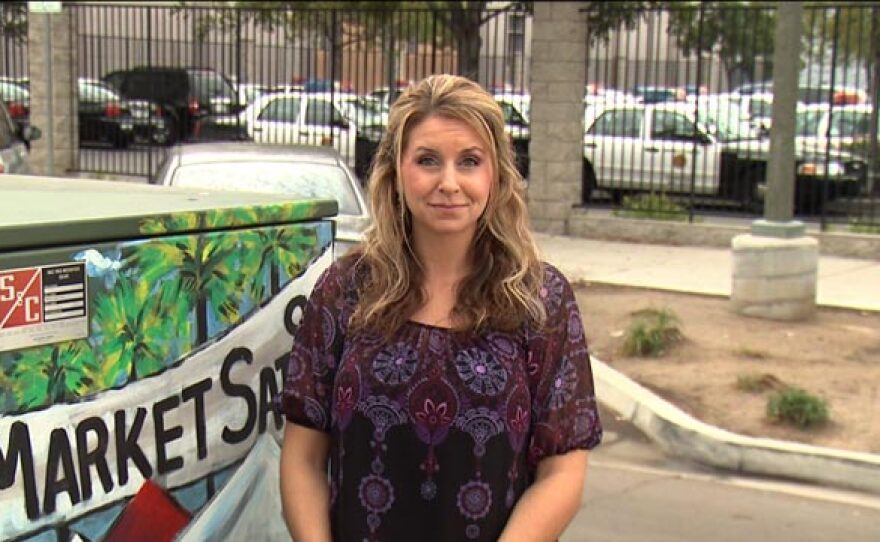GLORIA PENNER (Host): Nationwide, people are experiencing food insecurity at alarmingly high rates. How is the County of San Diego dealing with the rise in hunger? KPBS reporter Sharon Heilbrunn has the story.
SHARON HEILBRUNN (KPBS Reporter): More Americans are going hungry than ever before. In fact, last year, more than one in seven households struggled to put enough food on the table. The increase in hunger means an increase in aid, and it's coming in the form of food stamps. The New York Times recently reported that more than 36 million people use the program nationwide. San Diego is no exception to the growth.
DALE FLEMING (SD County Health & Human Services Agency): We're seeing a huge increase in food stamps both in applications, people who are requesting the benefit, and in our recipients. So looking at September to October, for example, we had a 14 percent increase. Almost 10,000 applications coming in.
HEILBRUNN: The increase in applications is actually a promising sign that more people are taking advantage of the program in San Diego, something that hasn't always been the case. Although there is no real way of determining how many people are eligible for food stamps, the San Diego Food Bank reports that more than 480,000 people in San Diego County face the threat of hunger. Only about 160,000 actually receive food stamps. So why the disparity in the numbers? It starts with a very cumbersome and complicated application process.
FLEMING: Just the fact that to apply, there is a five page application, and another 10 pages of a statement of work, and another two pages of... so there's all these forms that are required instead of clomping them into one, for instance, and getting it all over with.
HEILBRUNN: The U.S. Department of Agriculture recently expressed concern that many states aren't adequately administering food stamps, and used the word "problematic" to describe the way many programs are run. It also noted that two states - Wyoming and California - have fewer than 50 percent enrollment of eligible people while Missouri, for example, has nearly 100 percent.
JOHN CRISWELL (Executive Director, SD Hunger Coalition): Well what I think about is some procedures that the state
of California does that few other states do. Two good examples of that would be finger imaging, where people need to get fingerprinted when they are applying or maintaining their elegibility for food stamps, and the other would be reporting quarterly after they've been enrolled in the program, creating just more paperwork and just stuff for the county workers to manage. But I think we have some extra stuff that's inplace that's just administratively burdensome. It's discouraging people from applying for the program. It's cost ineffective.
HEILBRUNN: With more people applying for food stamps, these administrative burdens may choke up an already congested system.
FLEMING: We do anticipate thatwe'll be able to add staff, deploy more staff to the program in the next couple of months.
In the meantime, we're working smarter with our community, we're changing the way we process things internally, trying to make better use of the resources that we do have. It is a struggle, there are wait times, our lobbies are very crowded.
HEILBRUNN: Organizations like the Hunger Coalition and the San Diego Food Bank are working together with the county to help people register for food stamps, which may be the most hopeful relief in sight.
CRISWELL: And actually, the effort to increase the activity with respect to doing food stamp pre-screening and application assistance really started before the recession hit, which is a blessing kind of in disguise. We identified this as a need in San Diego County to focus on. And now it's good because there's more infrastructure and plays more people that are trained and out there to help those in need to get enrolled in a program.
HEILBRUNN: More places are starting to accept food stamps, like some farmers markets in San Diego and even some Costcos, including the one in El Centro. The company said that soon, at least half of its stores nationwide would do the same.





